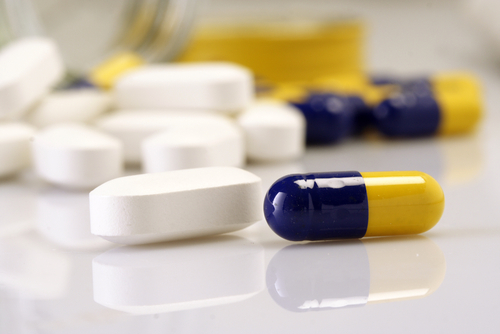IPX203 Extended-Release Capsules Reduce ‘Off’ Time in Advanced Parkinson’s, Trial Shows

Impax Laboratories‘ investigational carbidopa-levodopa extended-release capsules, IPX203, are better than immediate-release tablets at maintaining steady levels of levodopa in the blood, and prolonging the alleviation of motor symptoms, in people with advanced Parkinson’s disease, according to clinical data.
Based on its positive results, the company is now studying IPX203’s safety and effectiveness in people with advanced Parkinson’s in a Phase 3 study (NCT03670953). The trial is currently recruiting at many of its 65 worldwide study locations; more information can be found here.
The study, “Pharmacodynamics, Efficacy, and Safety of IPX203 in Parkinson Disease Patients With Motor Fluctuations,” was published in the journal Clinical Neuropharmacology.
Levodopa (LD), the “gold standard” treatment for Parkinson’s symptoms, works by replenishing the brain’s dopamine, which is gradually lost in people with the disease. The therapy can be used alone, or in combination with carbidopa (CD), and is available in many forms: as controlled or extended-release tablets, known as Rytary; as dispersible tablets that can be mixed with water; and as an intestinal gel, called Duodopa.
Impax now is developing a new version of extended-release CD-LD capsules, called IPX203, expected to reduce the motor complications seen with prolonged use of short-acting levodopa or other dopaminergic therapies.
These short-acting medications typically require frequent doses, so their concentrations in the body tend to fluctuate over time while patients are receiving treatment. As a result, dopamine receptors in the brain are stimulated in an intermittent fashion.
Researchers believe this can explain why patients using levodopa for prolonged periods of time often experience motor complications, such as motor fluctuations or uncontrolled, involuntary movements, called dyskinesia. These side-effects are common, and can be very disabling.
To get around these effects, IPX203 contains carbidopa and levodopa in a ratio of 1-to-4. While that ratio is identical to marketed combinations, IPX203 is made of special beads meant to achieve the desired levels of levodopa in the blood. It is designed to first cause a quick rise of levodopa, followed by prolonged, steady concentrations “that extend beyond currently available products,” the researchers said.
Prior studies have shown that IPX203 has longer activity compared with immediate-release carbidopa-levodopa (IR CD-LD), and with extended-release CD-LD capsules.
In that open-label trial (NCT03007888), researchers compared the safety, efficacy, and pharmacodynamics — the interactions between the body and a compound — of IPX203 capsules versus immediate-release CD-LD tablets. The trial, conducted at 11 sites in the U.S., included 28 patients with advanced Parkinson’s who were experiencing motor fluctuations.
Participants were randomly assigned a two-week treatment with IR CD-LD, followed by a two-week treatment with IPX203, or vice-versa, with one week of “washout” between therapies. A washout is a period of time during a clinical study when a participant is taken off the study drug or other medication so as to eliminate its effects on treatment. This type of study design is called a crossover.
The results showed that, after a single dose of IPX203, blood concentrations of levodopa were maintained during 4.6 hours above half of its highest (peak) concentration. The IR CD-LD only sustained comparable levels during 1.5 hours.
Importantly, data from levodopa’s levels and distribution in the body matched clinical improvements.
According to patient diaries, IPX203 treatment led to significantly less “off” time — meaning less time when the medication is not working optimally and symptoms return — compared with therapy with IR CD-LD.
Patients reported a mean “off” time, depicted as a percentage of waking hours, of 19.3% with IPX203 versus 33.5% with IR CD-LD.
This translated into 2.3 hours less of feeling “off” with IPX203. Most of this extra time, a total 1.9 hours, was classified by patients as a period of “good on” — defined as “on” time without or with nontroublesome dyskinesia.
Mean total “on” times with troublesome dyskinesia were similar during both treatments.
Pharmacodynamic assessments indicated similar outcomes in favor of IPX203 regarding motor symptoms, assessed using the MDS-UPDRS-III scale, in both single- and multiple-dosing studies.
Motor improvements were already noticed from 3 to 8 hours after the first dose of IPX203. Likewise, from day 1 to day 15, people treated with IPX203 had a 9.3-point improvement in motor scores, versus a 0.1 point change when taking IR CD-LD. Researchers note that a 4-unit improvement is considered clinically meaningful to the patient.
Both treatments were well-tolerated, with most treatment-emergent adverse events (TEAEs) being mild to moderate. A higher percentage of patients reported TEAEs while taking IPX203 (35.7%) compared with IR CD-LD (7.4%). The most common TEAEs were dyskinesia (five patients), dizziness (two patients), and nausea (two patients), all occurring during IPX203 treatment.
“[T]he findings support the safety and efficacy of IPX203 at the recommended doses given approximately every 7 to 8 hours,” the researchers said.
“The reduced peak-to-trough fluctuations of LD achieved with IPX203 resulted in a consolidation of [on] periods in contrast to the frequent cycles of [on] and [off] periods with IR CD-LD therapy,” they said.






